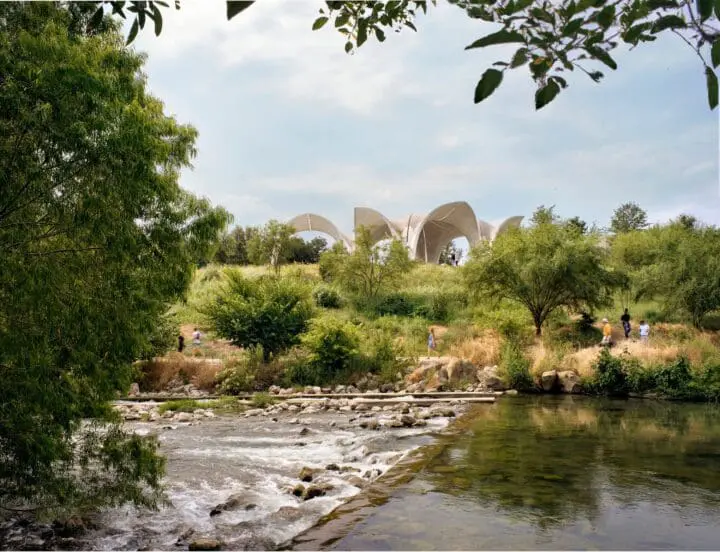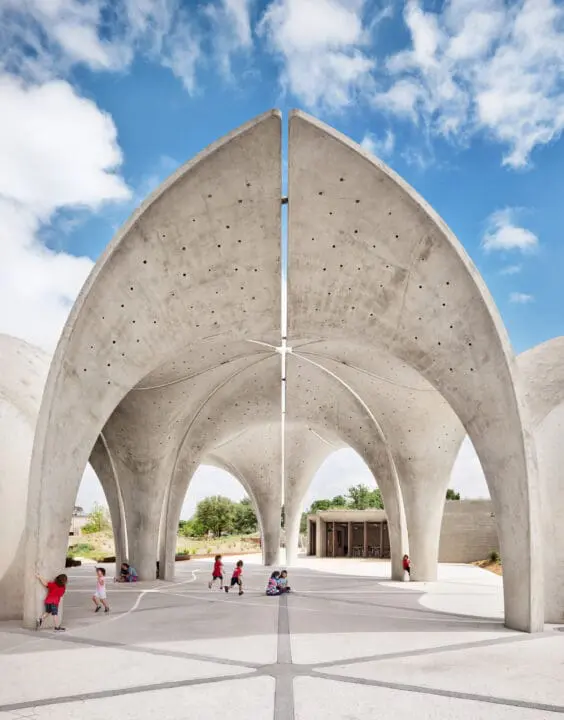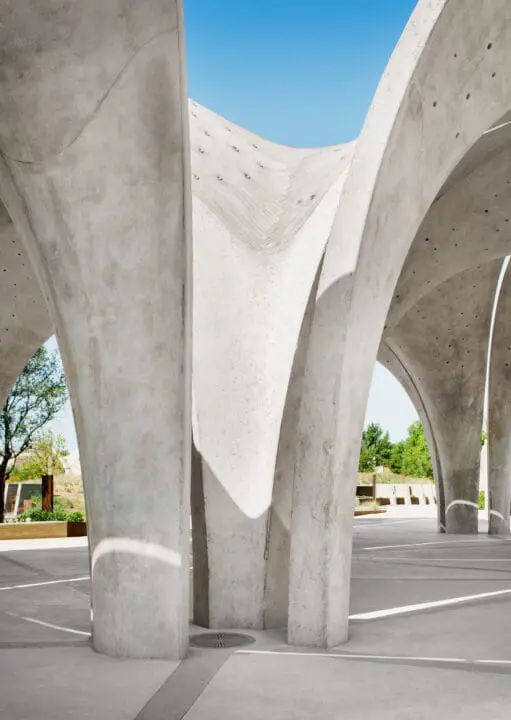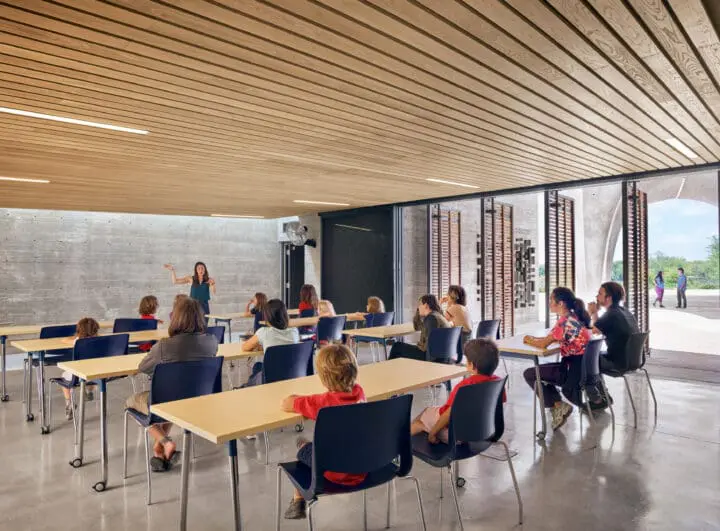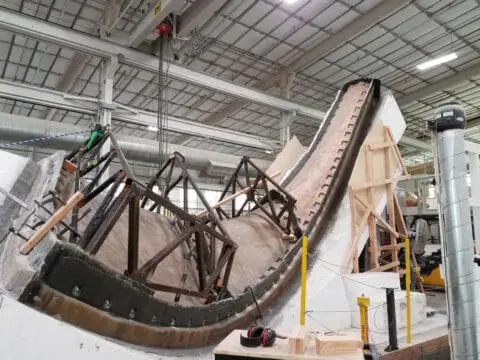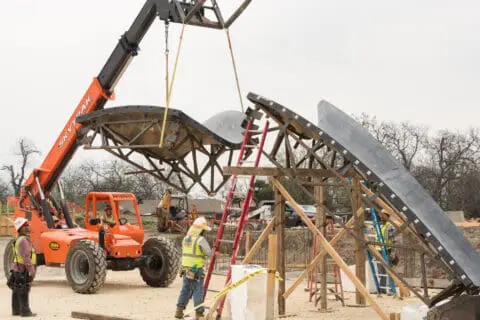Confluence Park
Along the bank of the San Antonio River, Confluence Park is a living laboratory designed to broaden visitors’ understanding of south Texas ecotypes and the impact of urban development on local watersheds. A destination for learning and recreation, the park is part of the country’s largest environmental restoration project and an accessible gateway to outdoor activity. Situated at the junction of the San Antonio River and San Pedro Creek, the design reflects the idea of confluence. The park’s shaped lands represent the convergence of ecotypes, while the central pavilion’s concrete petal structures draw inspiration from plants that funnel rainwater to their roots.
In collaboration with Matsys.
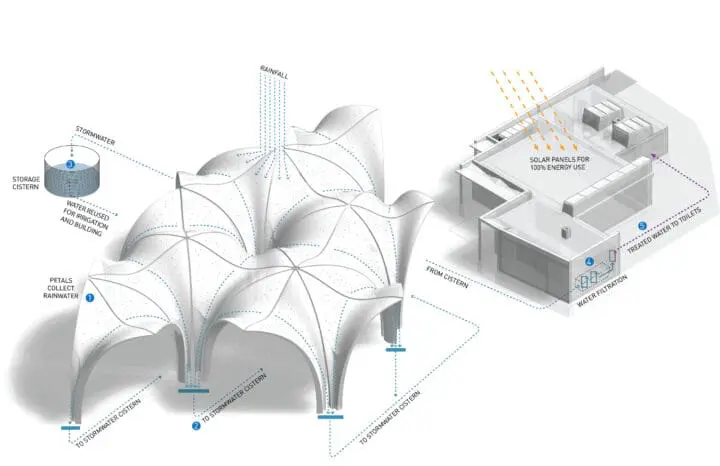
Parks are places that should be architecturally aspirational to introduce great design to a broad swath of the population. Confluence Park does just that.Design Award Jury
Texas Society of Architects
The conversion of a former blighted industrial laydown yard into a public amenity, designed to be sustainable and low impact, with thoughtful placemaking in mind, has had a deep and forward-facing impact on citizens, visitors, and students. While the client’s original intent was to provide a river access portal delivering exceptional outdoor educational programming, the project has become something bigger—a destination for the region and San Antonio community. Since opening in March 2018, the park has hosted over 2,000 programs and 150,000 students.
Confluence Park is brought to life by rainwater. Using the biomimetic principle of looking toward nature for inspiration, the pavilion geometry is inspired by plants’ use of doubly curved fronds to cantilever and collect rainwater and then redirect it to the root stem. The concrete “petals” were formed to collect rainwater and funnel it into a central underground catchment basin, which collects around 825,000 gallons of rainwater each year and can hold up to 100,000 gallons below the surface. Rainwater is filtered through alluvial soils, preventing any contaminated runoff from entering the San Antonio River, and is then used for sewage conveyance and irrigation.
The multipurpose Estela Avery Education Center building houses park amenities and a classroom/event space that opens to the pavilion, blurring the lines between indoors and out. A green roof provides thermal mass for passive heating and cooling, while a solar photovoltaic array is intended to produce 100% of the park’s energy needs. This low-lying building was designed as a dynamic juxtaposition to the pavilion—the board-formed concrete walls are highly textured compared to the smooth, fiberglass-formed petals, and the more geometric forms contrast with the curves of the pavilion.
Petal Construction
Confluence Park
Consultants
- Client: San Antonio River Foundation
- Architectural Design: Lake Flato + Matsys
- Landscape Architect: Rialto Studio
- Structural Engineer: Architectural Engineers Collaborative
- Mechanical Engineer: CNG Engineering
- Lighting Design: Mazzetti
- Petal Formwork: Kreysler & Associates
- Conceptual Master Plan: Ball-Nogues Studio with Rialto Studio
- General Contractor: SpawGlass
- Photography: Casey Dunn
- Videography: Bluestack Media
Awards
- 2023 AIA Committee on the Environment Top Ten Award
- 2022 Metropolis Planet Positive Award Honoree
- 2020 Chicago Athenaeum American Architecture Award
- 2019 Texas Society of Architects Design Award
- 2019 Texas ASLA Award of Excellence
- 2019 San Antonio Business Journal Community Impact Award
- 2019 AIA Architecture Award
- 2018 TiltUp Achievement Award
- 2018 Architizer A+ Jury Award Cultural Pavilions
- 2018 Architect’s Newspaper Best of Design Award in Infrastructure
- 2018 AIA San Antonio Honor Award
- 2016 Texas Architects Studio Award
